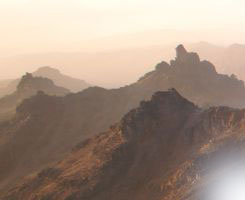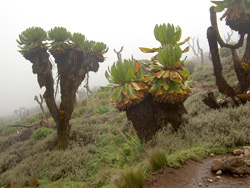|
|

|

|
|
|

|

|

|

|

|
Environmental Clean-Up
To several tribes in Kenya living around the mountain, Mt. Kenya is the home of their God, and the location of their creation mythology. It is therefore, a place to be treated with respect and reverence by more than 15,000 people who visit the mountain each year. So out of respect for Mt. Kenya, for those who hold it sacred and for those who wish to enjoy its wonders leave no trace of your visit and be part of the Mount Kenya clean up effort. Remember that Mt. Kenya’s high elevation on the equator has created an ‘island environment’ that is especially sensitive to human use. Therefore visitors are advised against leaving any trace of environmental hazards (pack in pack out).
|

|

|
|
Wildlife
Wild animals on Mt. Kenya do not normally come in contact with hikers. If surprised or provoked, particularly Cape buffalo and Elephant, they may charge. But frequent clapping and making a hooting sound while hiking below the moor lands, warns animals you are approaching and they will move away from you.
|

|

|

|
|
Environmental Studies
Mt. Kenya Guides and Porters safari club will also provide briefings on minimum impact camping practises, flora and fauna identification, basic geology, Mt. Kenya history, and wilderness ethics. Our guides will also be available for informal discussions on these topics.
|

|
|
Please Remember
|
|
As you are hiking with guides and porters, be sure to keep adequate gear in your rucksack so that you have what you need should you become separated. A map, food, water, first aid kit, compass clothing and a light source are essential.
To enjoy your trip eat well, drink lots of fluids, dress appropriately and hike slowly at your own pace!
|
|
|
|
|
|
| Photograph taken by Martin Mergili
|
| Development in Cooperation with the Institute of Geography of the University of Innsbruck, Austria. Project Leader: A.o.Prof. Dr. Ernst Steinicke
|
|